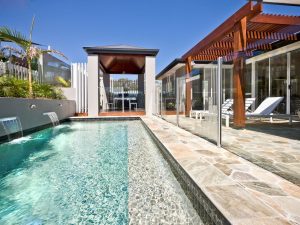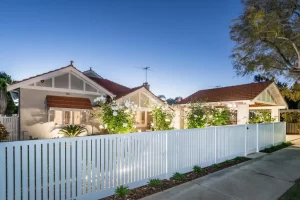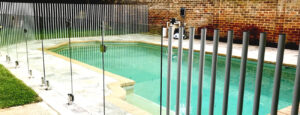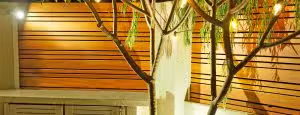Team Work Fencing is a professional Asbestos removal and replacement company, serving homeowners and communities from Perth to Bunbury. You can contact us via phone or email to discuss your project.
Is My Fence Asbestos?
If your home fence was built pre-1980’s, Asbestos remains the most likely material used for Australian fences. Your property’s title deed and other associated documentation, including Local Government records, may help to date the fence, however if the fence is cement-like and could have been built before 1990 then it is likely to be Asbestos.
Asbestos, used for roofing, ceiling, walls, and fences, is proven to be dangerous. It is important that an Asbestos fence is either replaced or sealed to ensure there are no exposed fibers. To start, you’ll need to identify the difference between Asbestos containing materials (ACM), Super Six (Non Asbestos) or Hardifence. While this article can help, the most accurate means of identifying Asbestos is to have a sample analysed. When obtaining a sample, ensure that you use disposable gloves, respiratory protection, and store it in two sealed bags. The sample will need to be labelled prior to being submitted to a NATA (National Association Testing Authorities) laboratory. A list of laboratories can be found on the NATA website, www.nata.asn.au.
It is best to assume your fence is Asbestos until proven otherwise by a professional, and only to be handled by professionals.
The Difference Between Hardifence, Super Six (Non Asbestos) and Asbestos Fencing
To the untrained eye, Hardifence, Super Six and Asbestos fencing all look very similar. There is no cause for concern over Hardifence, or Super Six (Non Asbestos), however Asbestos requires special attention and in most cases, should only be removed by a professional. Following our tips to know if you potentially have an Asbestos fence.
Please note that some earlier asbestos fences were also called Super Six. This article generally refers to the Super Six Non Asbestos.
Age of the Fence
If your property was developed before the 1980s, there is a high probability of it being an Asbestos fence. However, due to a large stockpile of the product, a house built in the late 1980s could still have been built using Asbestos. From 1990 onward, there is less chance that an Asbestos fence was installed. However, a total ban on Asbestos was only introduced in 2003, therefore even if your house was built after 1990, you cannot guarantee it is not Asbestos.
The Number of Ridges
An indication that your fence may be asbestos is by the number of ridges in the sheet profile. You can tell the difference between Asbestos and the more modern Hardifence by counting the number of ridges; where modern Hardifence has 5 ridges, Super Six (Non Asbestos) and Asbestos has 6 ridges. Whilst five ridges are a sign that your fence is Asbestos free, this method cannot determine the difference between Super Six (Non Asbestos) and Asbestos fencing.
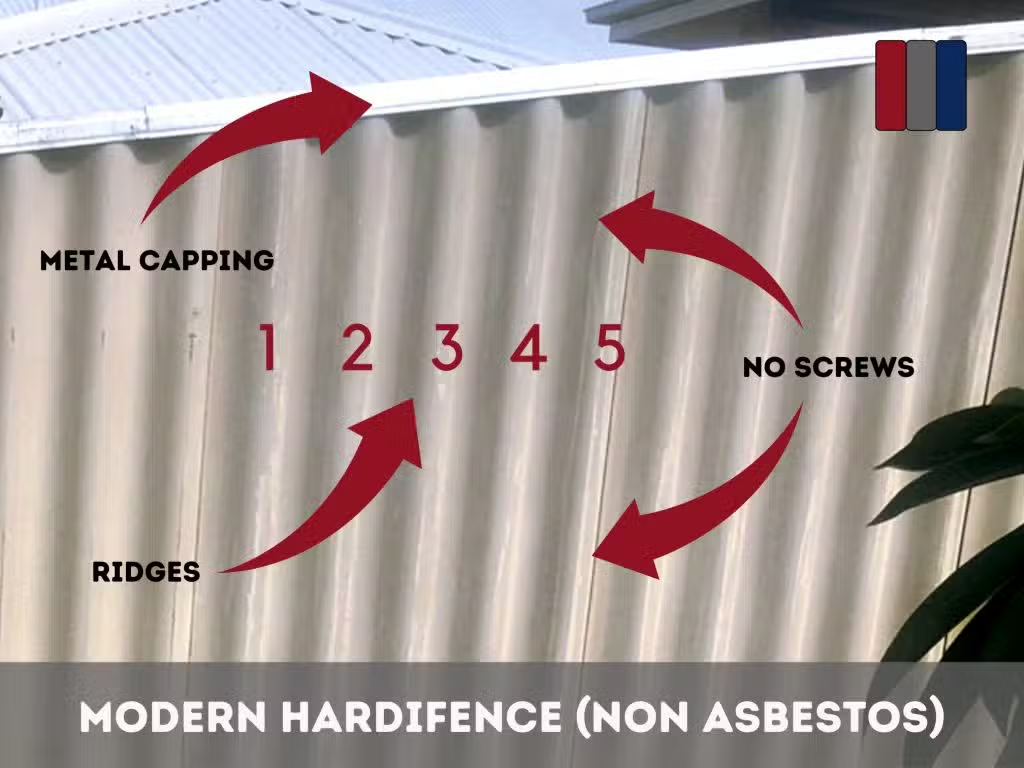
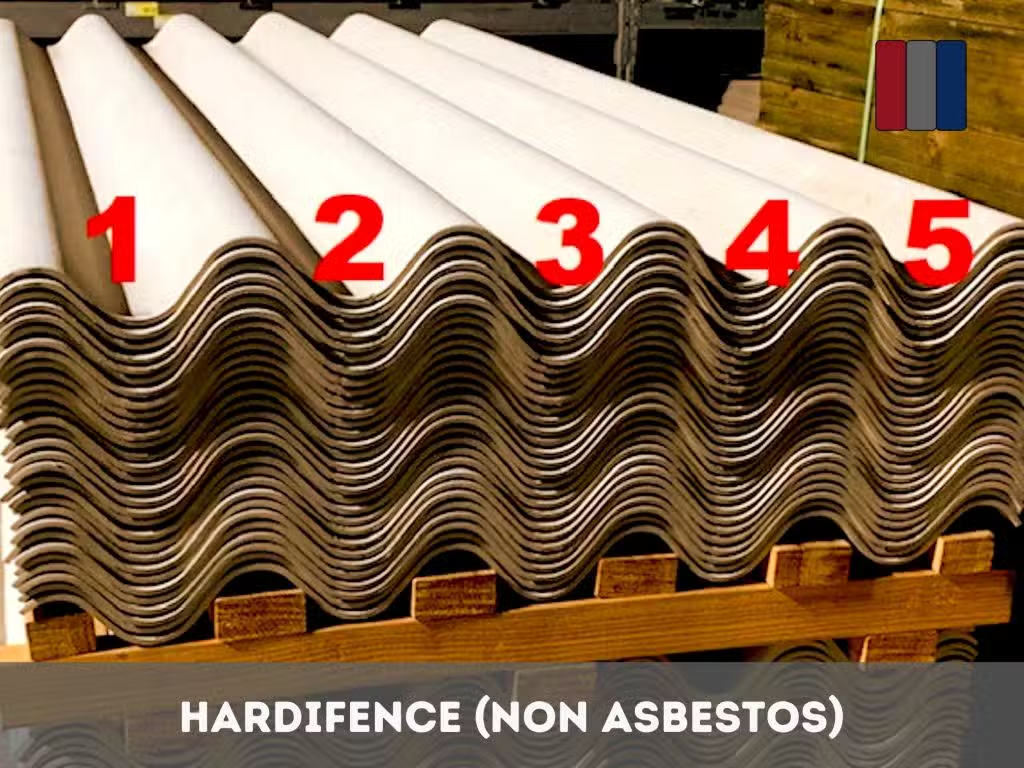
Note the six ridges on this sheet, however this is a Super Six (Non Asbestos) sheet.
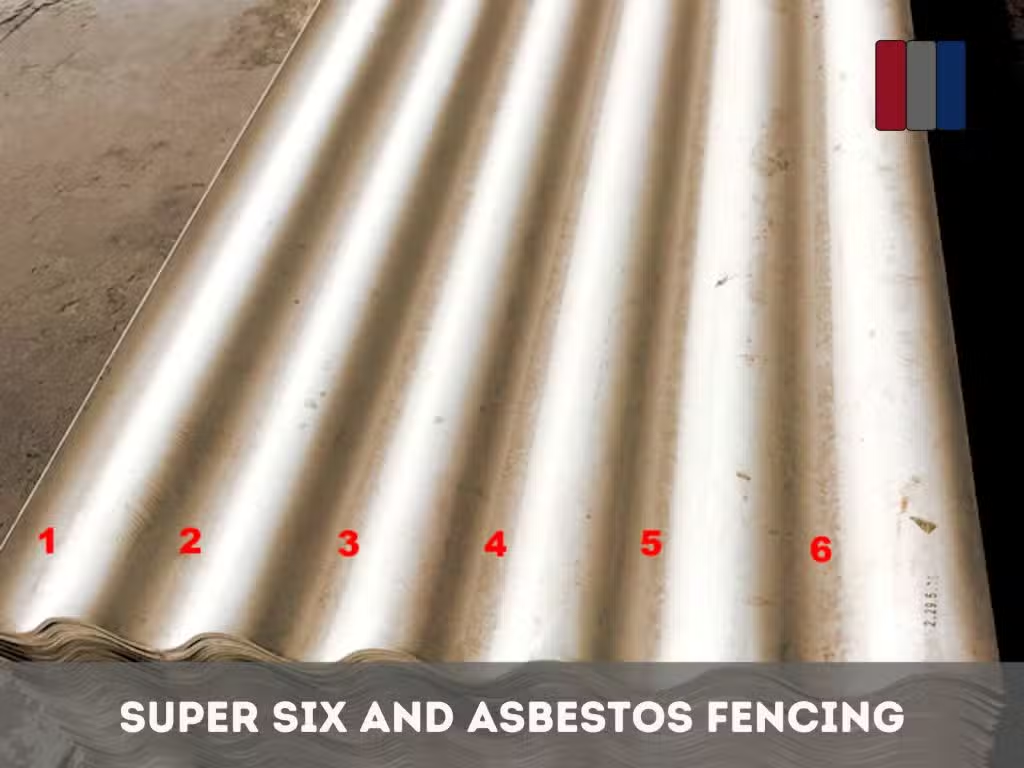
Check for Markings on the Panel:
Check the edge of your fencing sheet for the marking “Hardifence”. Early versions of Hardifence were produced with the phrase “Manufactured without Asbestos”, and the manufacturing date. Later versions are printed with the marking “Hardifence” only.
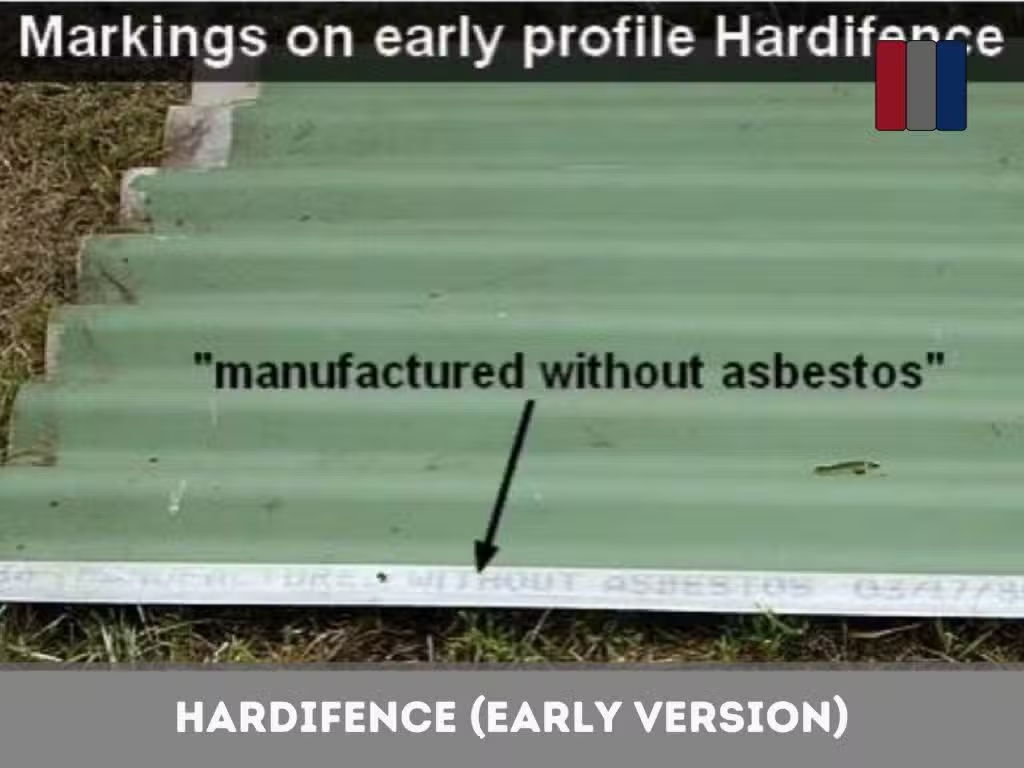
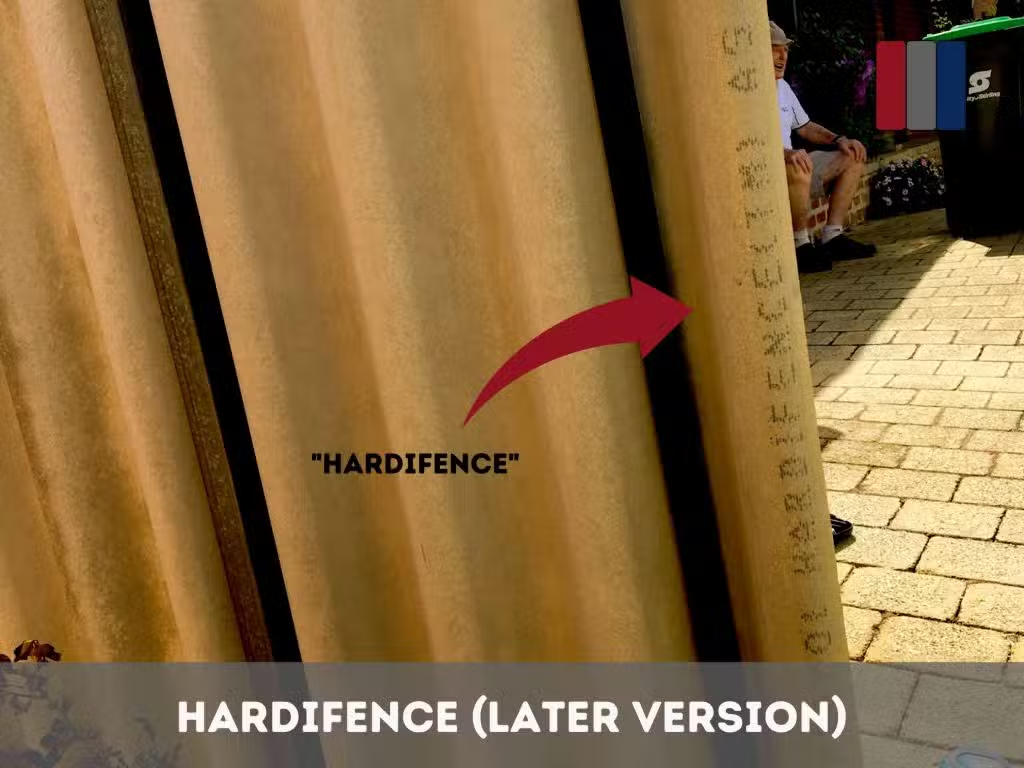
Fence Capping
Another approach is to look at the fence capping. Asbestos fences were usually fitted with fibre cement capping, while Hardifence has metal capping. Not all fences have capping, especially the older Super Six and Asbestos fences, however if your fence has a fibre/cement capping, then you can be certain this is Asbestos. It is important to be aware that in some circumstances, fiber cement capping may have been replaced with metal capping on an Asbestos fence.
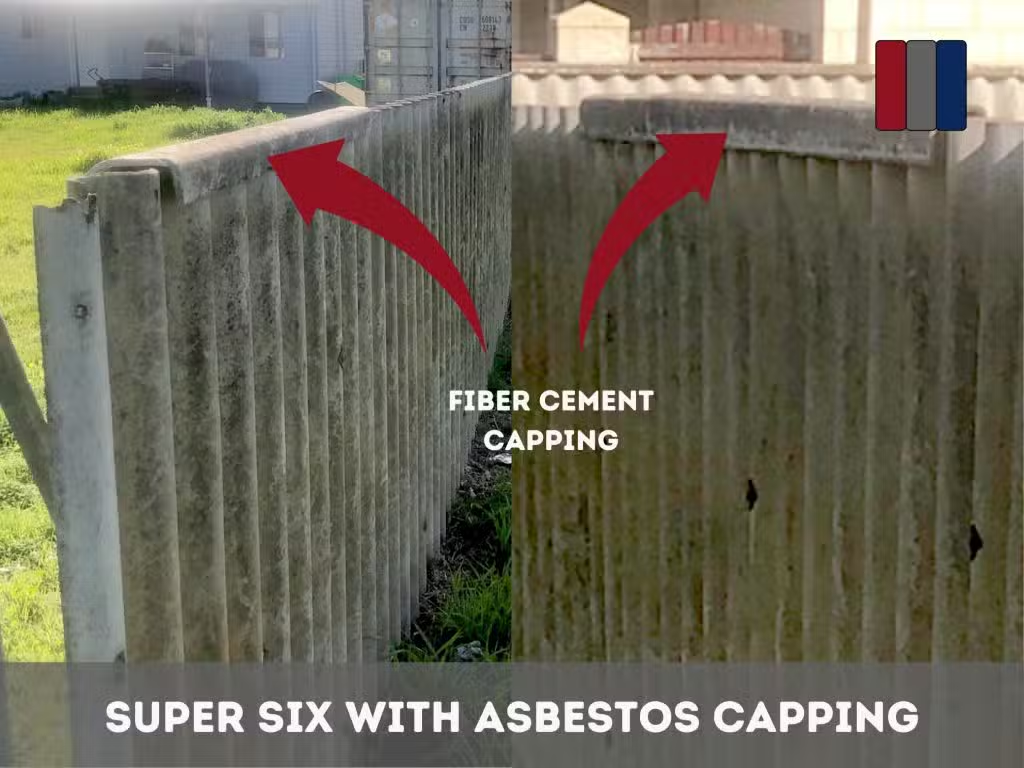
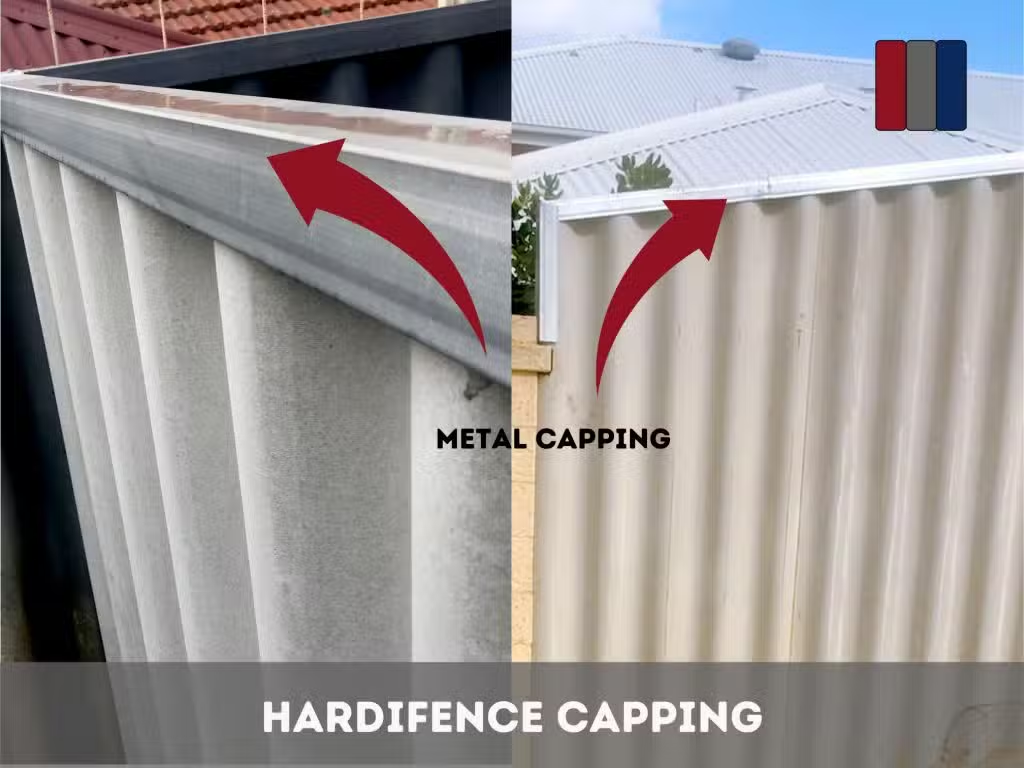
Fence Surface
The surface of Hardifence or Super Six (Non Asbestos) can have small dimples on the sheets in a linear pattern, found on one side only, Asbestos on the other hand will not have these dimples, instead it will have a hessian crosshatch-like surface pattern.
Hardifence/ Super Six Non Asbestos
Small dimples are visible, and the surface can be scratched when scraping a key against it.
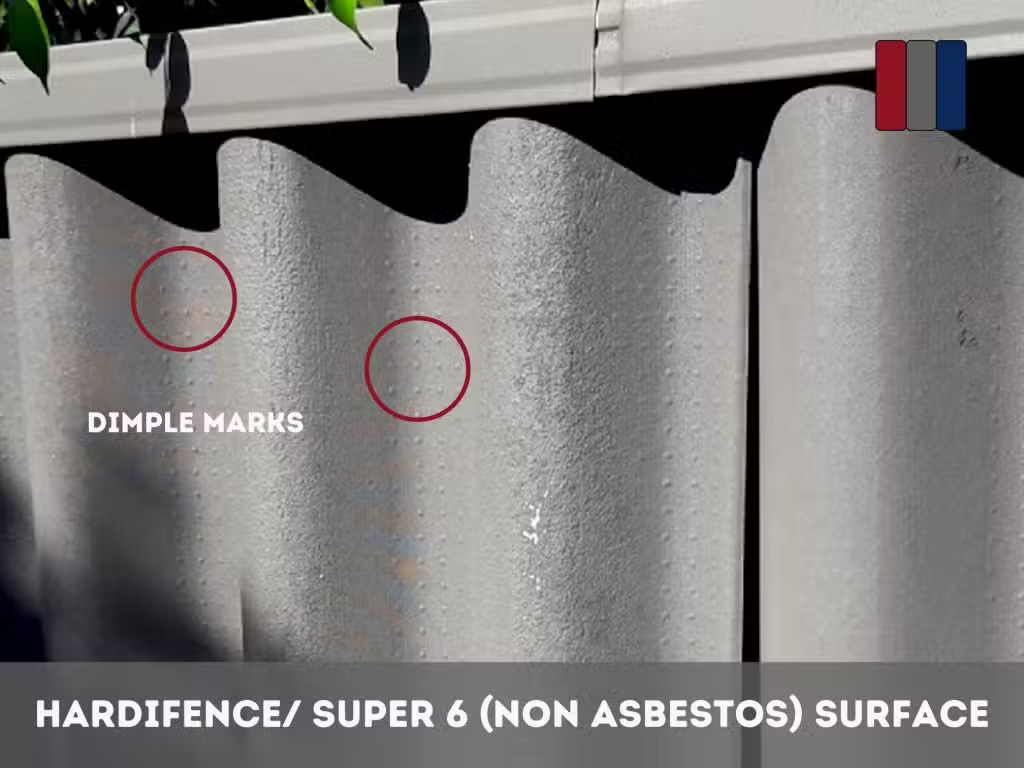
Asbestos Fence
A snake like skin on the surface is visible which does not scratch when scraping a key against it.
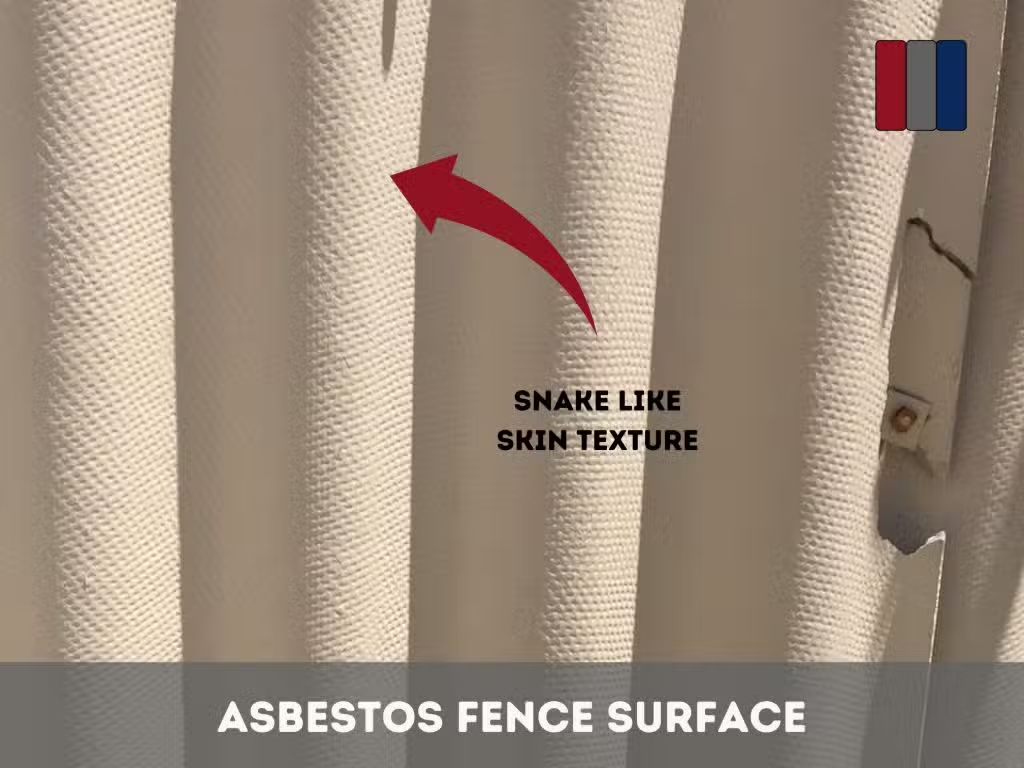
Diamond-Shaped Metal Washers
Typically, Asbestos fences were built with diamond shaped metal fasteners to hold the sheets together. During the transition to non Asbestos products, diamond shaped washers were still used even on non Asbestos fences, especially with early forms of Super Six sheets, therefore it is possible for your fence to be non asbestos but have these washers with early forms. In contrast it is also possible for your fence to be asbestos but not have these washers. In this case, a fibro capping would most likely have been used to hold the sheets together which would confirm that the sheets are in fact Asbestos.
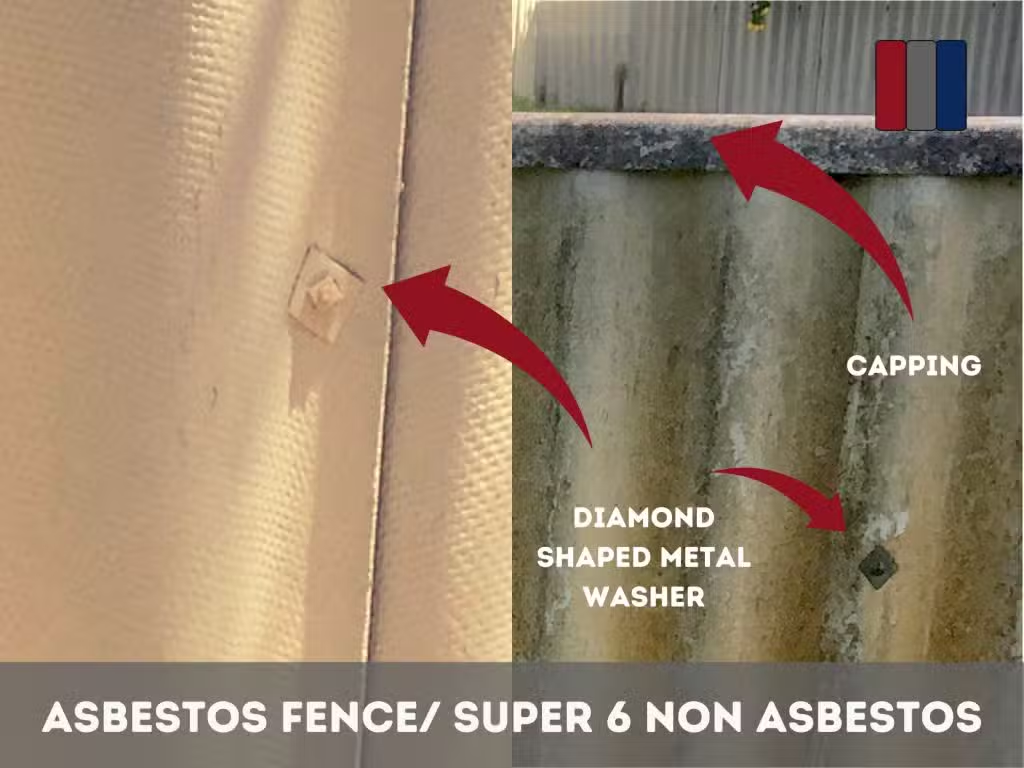
Early versions of Hardifence were prone to breakage when fastened with diamond shaped washers and often cracked, with damage near the diamond washer and bolt fixing being common.
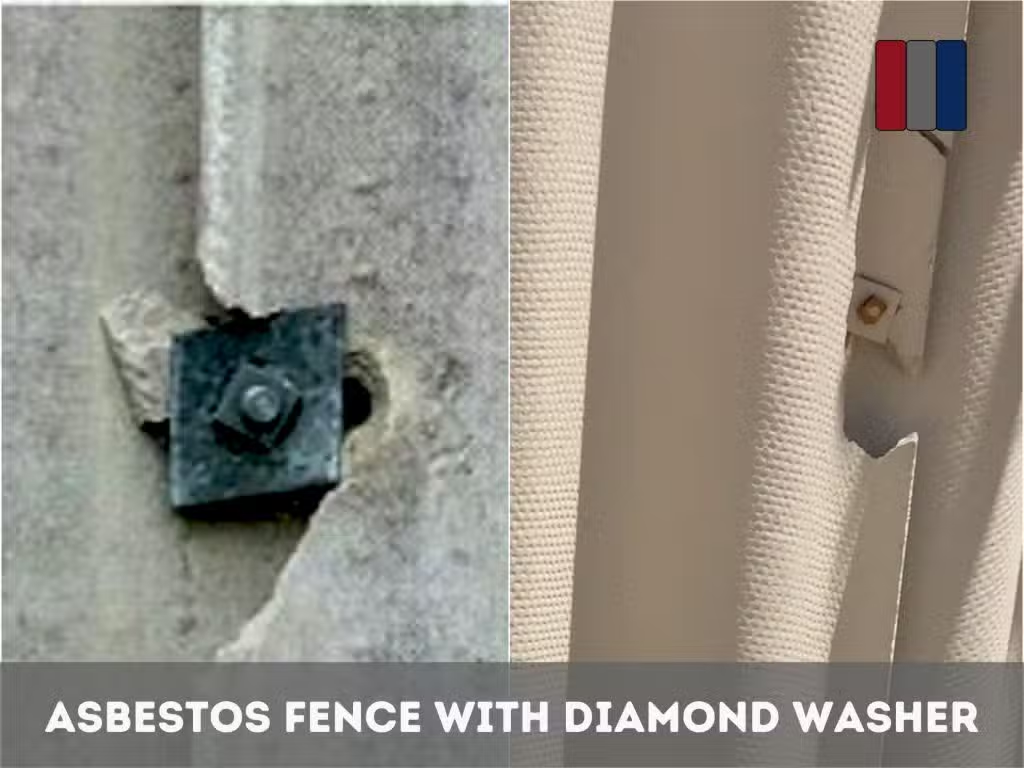
Diamond-Shaped Metal Washers
It is recommended to engage a professional to identify asbestos, as it can be difficult to tell the difference and broken pieces carry the risk of exposing fibers. Do not ever break any suspect Asbestos sheeting!
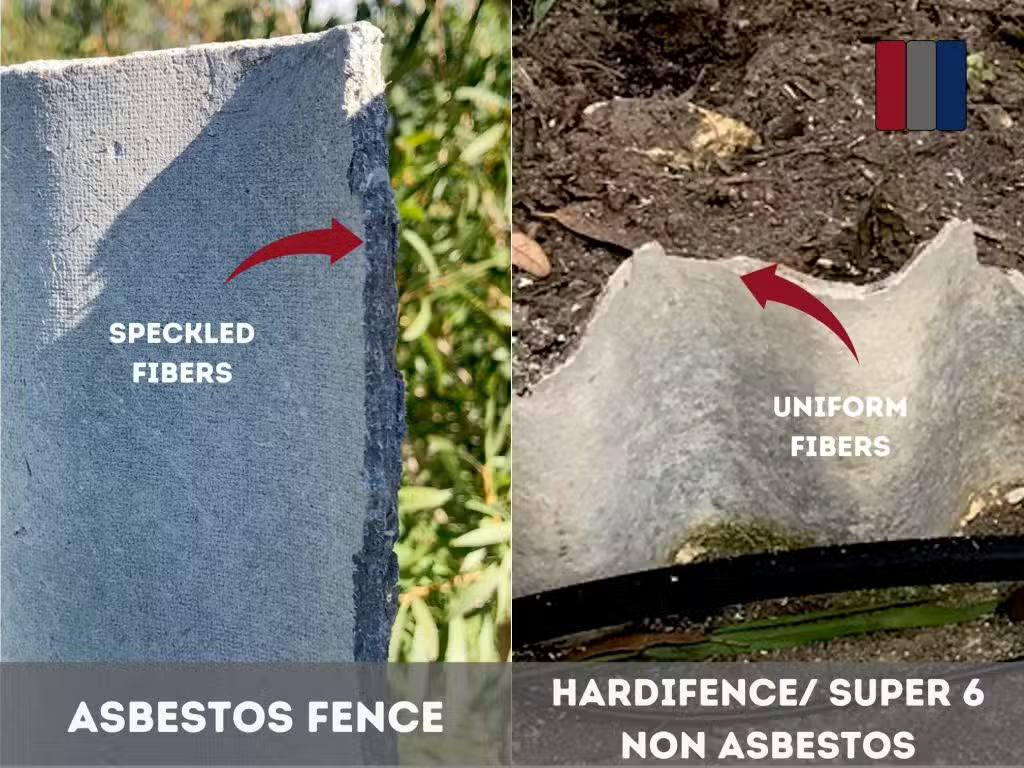
Asbestos fibers tend to be in large clumps or bundles, stick out near breakage points, and have a more speckled appearance.
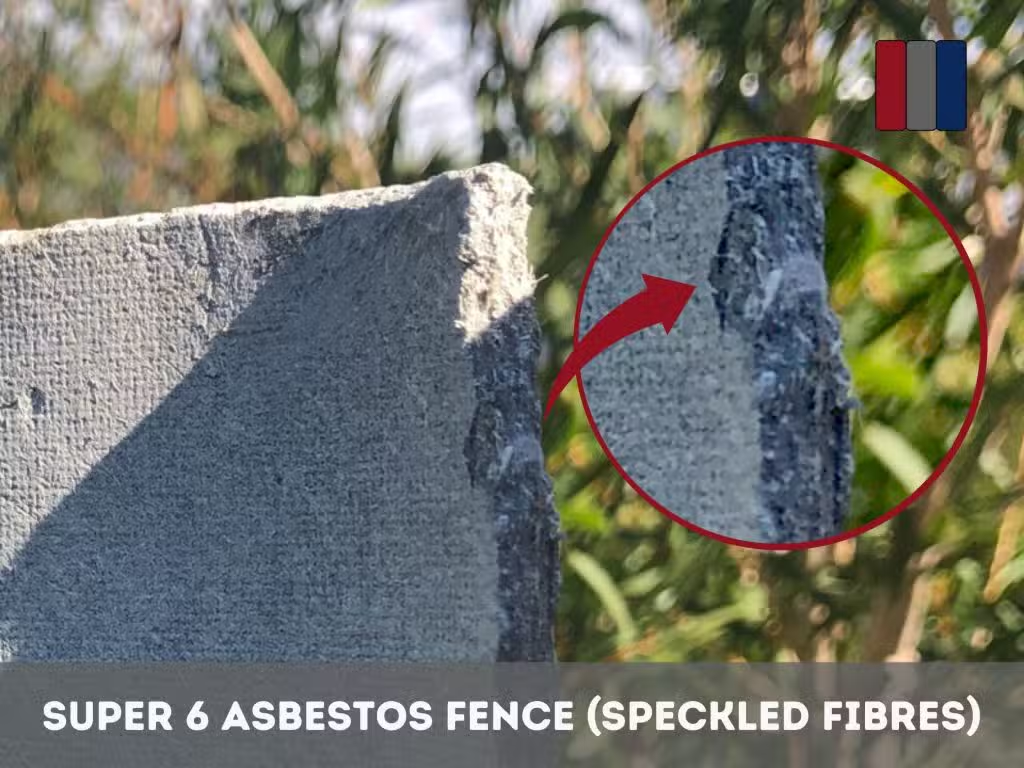
Hardifence on the other hand is uniformed, has short fiber lengths and are not as strong. In a storm it is more likely that Hardifence panels will be damaged as a result of strong winds, where none Asbestos fences will resemble a torn cardboard look with a layered appearance due to the way it is manufactured.
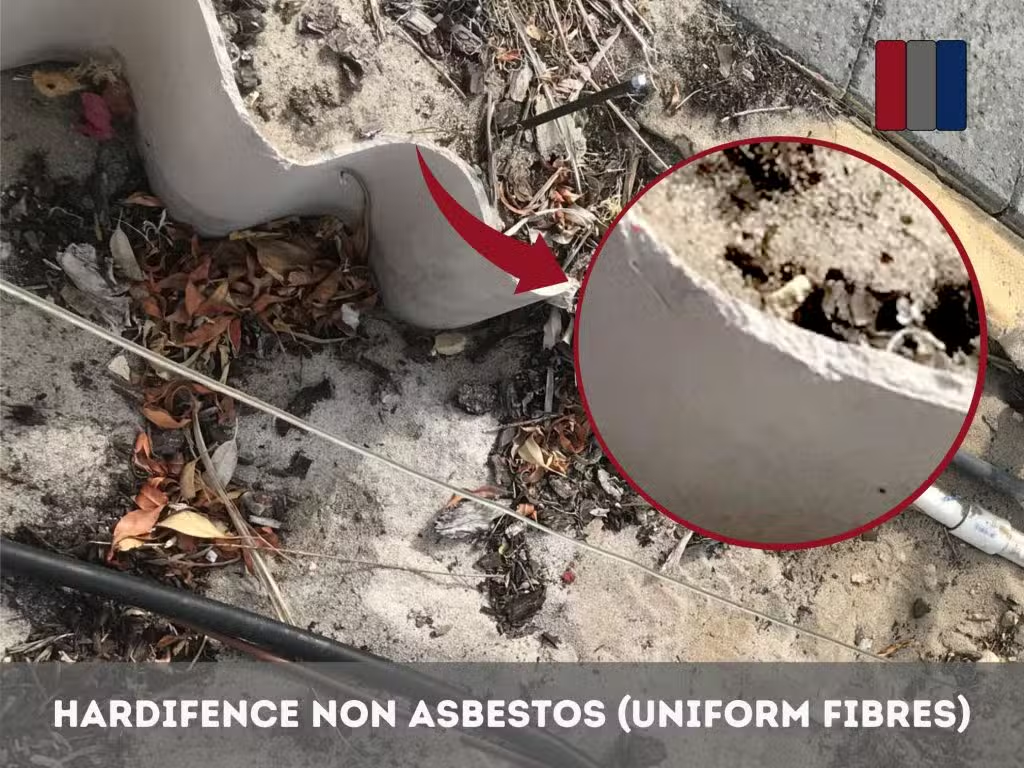
Safe Alternatives to Asbestos Fencing
There are safe alternatives when removing and replacing your Asbestos fence. Alternatives include Colorbond fencing, PVC, timber, aluminium slats and other types of environmentally friendly residential and commercial fences. Hardifence, as of 2019, is no longer available unfortunately due to it being no longer viable for the manufacturer to make.
Talk to Team Work Fencing about options that are diligently engineered to cope with Australia’s harsh weather, and have the same beneficial purpose as Asbestos, minus the toxic components that are harmful to you and the environment.
For an Asbestos fence rated as “Very Poor” condition, it is strongly recommended that it be removed as soon as possible, and it is recommended that you take immediate management actions in the form of temporary warning signs and barriers. In some cases, a Local Government Environmental Health Officer may direct this to occur. Please speak to your local council for advice on your fence.
Did You Know?
If you are a landlord, testing and removal of Asbestos from your rental property could be tax deductible.
If you have undertaken testing for Asbestos (even if none was found), removed Asbestos, and/or reinstated property parts (for example, walls) that were removed due to Asbestos, you may be able to claim a tax deduction on these costs.
This applies to rental or commercial properties, or your home if it is also a place of business. It is recommended to discuss this with a financial advisor.
Asbestos Fence Management Process
Assess Asbestos fence condition based on weathering, damage and degree of lean
Determine remediation measures based on condition and content of Asbestos fence, noting general desirability of removal.
Undertake remediation measures using asbestos professionals
Let us make a recommendation for you.
Receive a No Obligation quote on Retaining Plinths and Colorbond Fencing Prices today!
